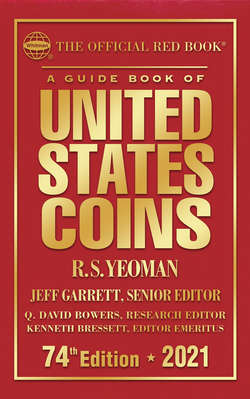Читать книгу A Guide Book of United States Coins 2021 - R.S. Yeoman - Страница 19
На сайте Литреса книга снята с продажи.
Alterations
ОглавлениеCoins are occasionally altered by the addition, removal, or change of a design feature (such as a mintmark or date digit) or by the polishing, sandblasting, acid etching, toning, or plating of the surface of a genuine piece. Changes of this sort are usually done to deceive collectors. Among U.S. gold coins, only the 1927-D double eagle is commonly found with an added mintmark. On $2.50 and $5 gold coins, 1839 through 1856, New Orleans O mintmarks have been altered to C (for Charlotte, North Carolina) in a few instances.
Over a century ago, five-dollar gold pieces were imitated by gold plating 1883 Liberty Head five-cent coins without the word CENTS on the reverse. Other coins commonly created fraudulently through alteration include the 1799 large cent and the 1909-S; 1909-S V.D.B.; 1914-D; 1922, No D; and 1943, Copper, cents. The 1913 Liberty Head nickel has been extensively replicated by alteration of 1903 and 1912 nickels. Scarce, high-grade Denver and San Francisco Buffalo nickels of the 1920s; 1916-D and 1942, 42 Over 41, dimes; 1918-S, 8 Over 7, quarters; 1932-D and -S quarters; and 1804 silver dollars have all been made by the alteration of genuine coins of other dates or mints.
